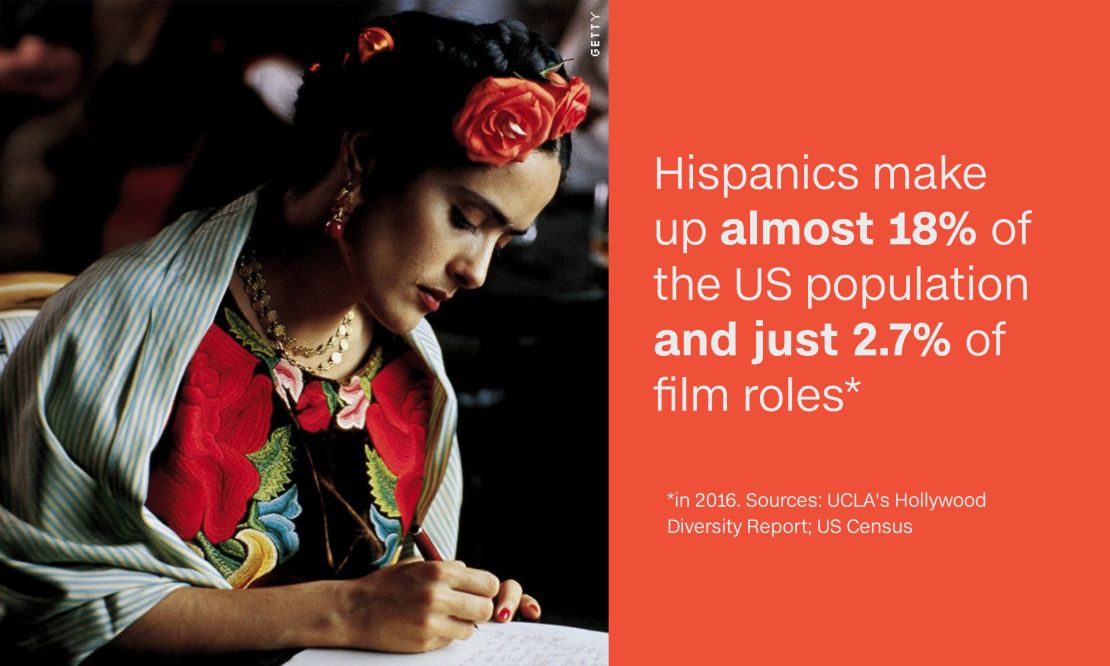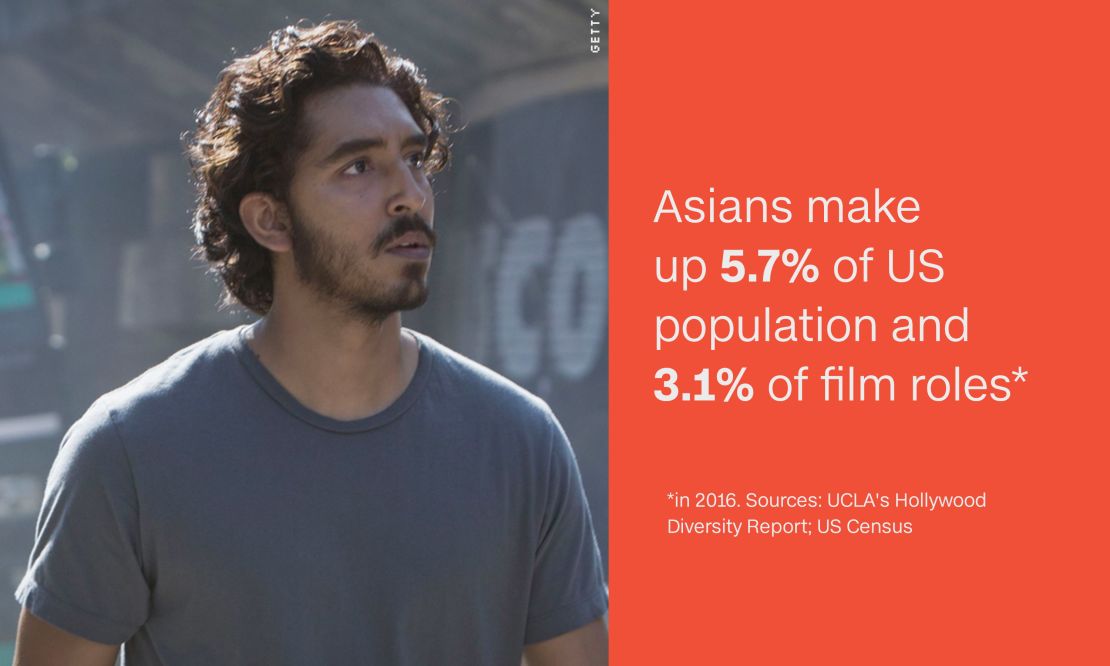After the #OscarsSoWhite outcry, we’re seeing glimmers of hope in Hollywood – with black actors, writers and directors nominated in multiple categories this year. But when it comes to Hispanic-Americans and Asian-Americans, the Academy Awards still have a long way to go to flip the script.
Take a look at this chart. It’s a look at 90 years of Academy Award winners in the major categories. While representation takes many forms, for ease of comparison we looked at US Census data and compared that with representation in Hollywood films. And what you see is that even as African-Americans have fared better in recent years, Hispanic-Americans and Asian-Americans are woefully underrepresented.
- Only 5 Hispanic-Americans have won (Anthony Quinn won twice)
- Only 2 Asian-Americans have won
Hispanic-Americans
Hispanic-Americans are the largest minority group in the US, making up 17.8% of the US population in 2016, but they bought 21 percent (277 million) of all 1.32 billion movie tickets sold that year. And yet, a University of Southern California study last year found that only about 3 percent of speaking roles in films in the last decade went to Hispanics.
Look how that underrepresentation is reflected in Oscar wins:
Even when lead roles call for Hispanic characters, they often go to non-Hispanic actors. For instance:
- The lead character in the 2012 Oscar-winner “Argo” was Mexican-American CIA operative Antonio “Tony” Mendez. But it was played by Ben Affleck (Mendez himself does not identify as Hispanic, as he mentioned in a 2013 interview with NBC Latino).
- Clara del Valle Trueba, a Chilean woman in the 1993 film “The House of Spirits” was portrayed by Meryl Streep.
- And in the 1961 musical “West Side Story,” Natalie Wood played Maria Nuñez, who was Puerto Rican. (Greek-American actor George Chakiris won a best supporting actor Oscar in 1961 for his role as Maria’s Puerto Rican brother, Bernardo.)
For this story, we’re only looking at Americans, so we’re not considering actors such as Lupita Nyong’o, Javier Bardem or Penelope Cruz, or directors such as Alejandro González Iñárritu or Ang Lee.

There’s also some progress of note. Take “Coco,” an animated film starring a majority of Hispanic and Latino actors, which is up for two awards this weekend: best animated feature film and best original song.
“Although I think we can be happy for the fact that there are a record number of nominations for black film makers, especially behind the camera this year, the black community does not stand for all communities,” #OscarSoWhite founder April Reign told CNN this week. “Until we have more representation of marginalized communities, #OscarsSoWhite is not finished.”
The National Hispanic Media Coalition is planning a protest on Oscars weekend.
“The disparity is huge and it’s been going on for years and we finally decided that enough is enough,” coalition president Alex Nogales told CNN. “We’re bringing the leaders of the industry to the table, and if they don’t we’re willing to boycott them.”
Asian-Americans
Asian-Americans are also underrepresented. Asians made up 5.7% of the US population in 2016 and but represented only 3.7% of film roles that same year. Even when they appear, they are rarely cast in leading roles.
And that shows in the tally of Oscar winners:
Over the years white actors have also been cast to play Asian characters. In 1983, for instance, Linda Hunt won the best supporting actress Oscar for playing Billy Kwan in “The Year of Living Dangerously.” Kwan’s character was half-Asian and male. In 1961, Mickey Rooney played Holly Golightly’s landlord Mr. Yunioshi in “Breakfast at Tiffany’s.” And most recently, Scarlett Johansson played the lead role of Motoko Kusanagi, a Japanese woman, in the 2017 film, “Ghost in the Shell.”
Yul Brynner, who is mostly of Russian descent, won a best actor Oscar for his role as the King Mongkut of Siam, which is present-day Thailand, in the 1956 musical “The King and I.”

“Our neighbors are people of color but Hollywood lives in a world where they start with a white frame,” said Joann Lee, a professor of communication at William Paterson University who has written about Hollywood’s bias against Asians.
“In their mind’s eye, this is a white experience.”


